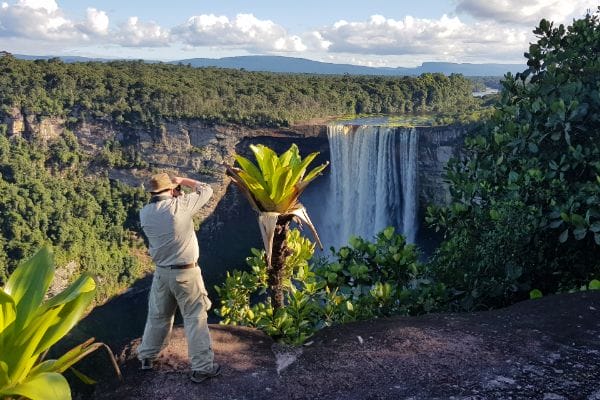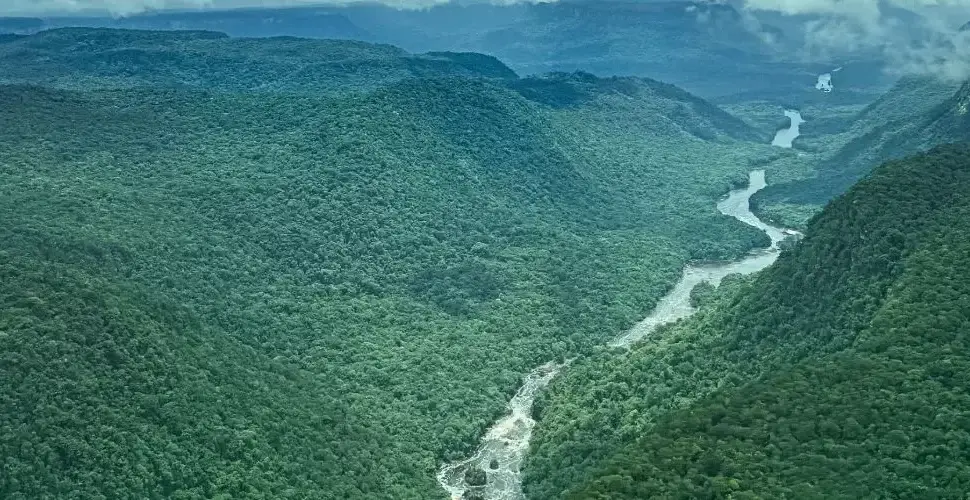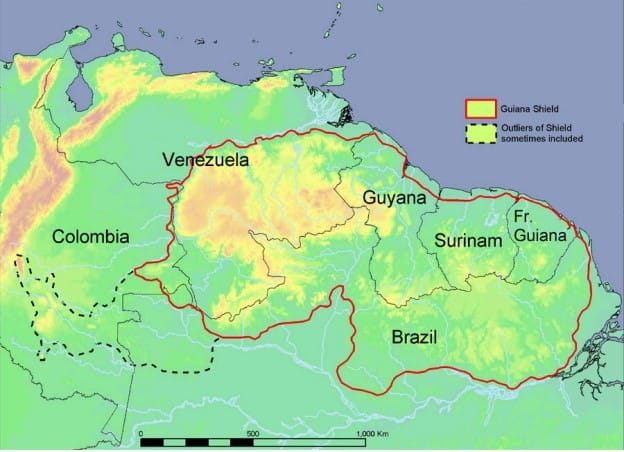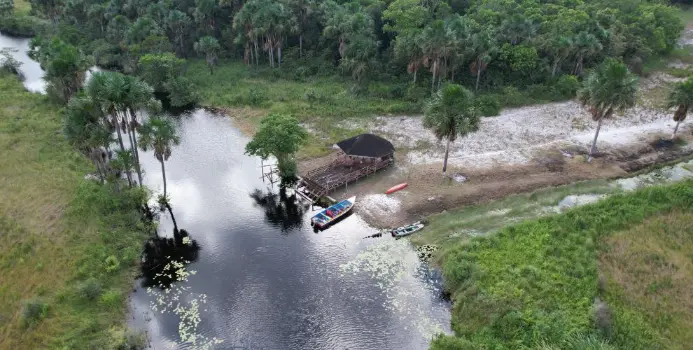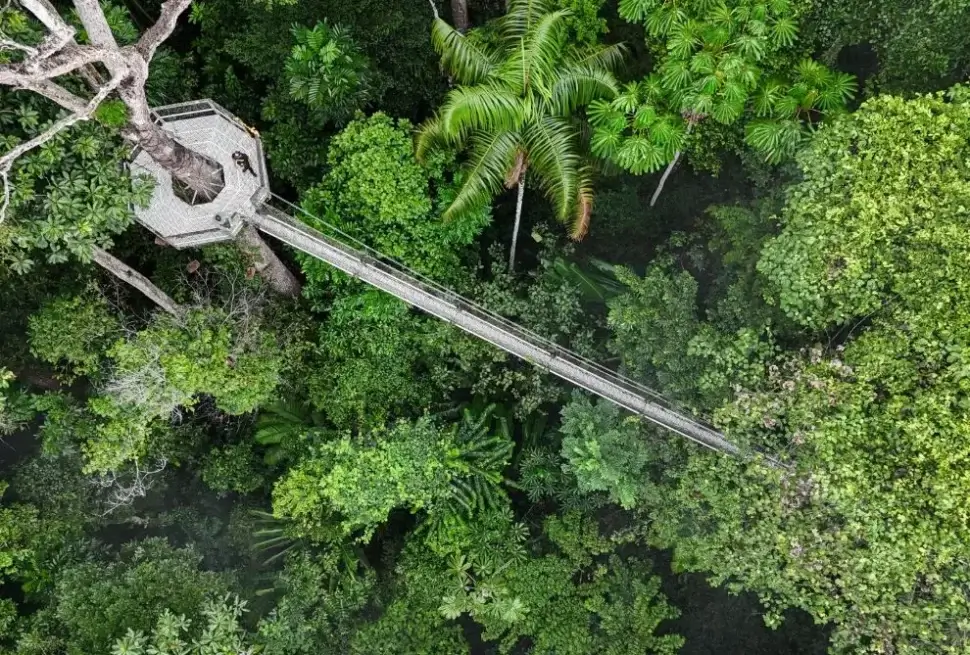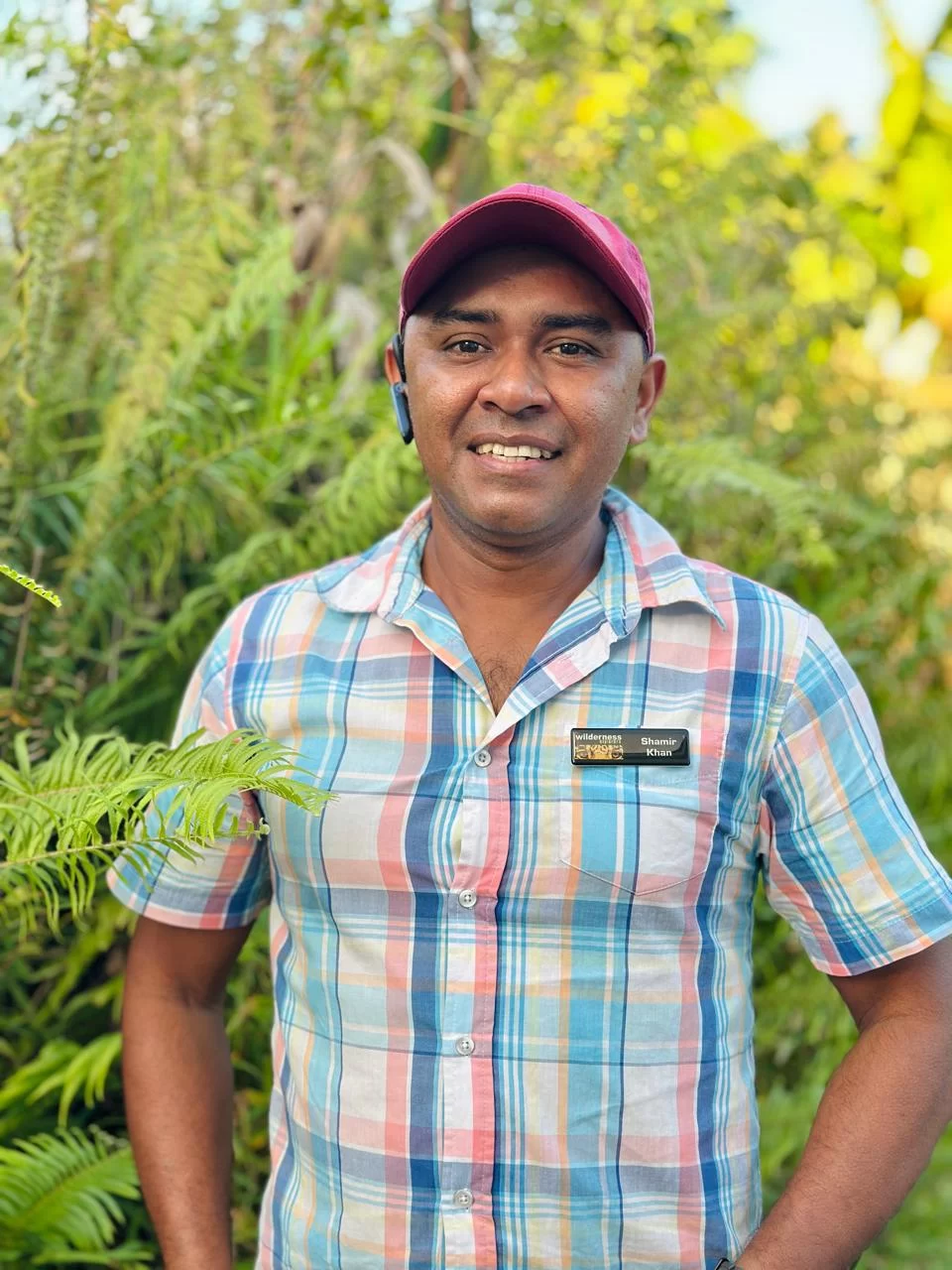Key Highlights
- One of the world’s tallest single‑drop waterfalls – 741 ft / 226 m of uninterrupted plunge.
- Protected inside Kaieteur National Park in Guyana, South America.
- Surrounded by pristine Amazonian rainforest alive with rare wildlife and orchids.
- Revered for centuries by the Indigenous Patamona people; in 1870 Canadian geologist Charles Barrington Brown became the first Westerner to record the falls.
- A scenic one‑hour flight from Georgetown’s Eugene F. Correia (Ogle) Airport lands just a 15‑minute walk from the rim.
Introduction
Kaieteur Falls towers roughly five times higher than Niagara and nearly twice as high as Victoria Falls. Fed by the Potaro River, it thunders off a sandstone‑conglomerate escarpment before exploding into the mist below. Within the 630 km² (≈243 sq mi) Kaieteur National Park, visitors are immersed in the lush rainforest where golden rocket frogs hide in giant bromeliads and harpy eagles patrol the canopy.
Geographically Significant Location
To reach Kaieteur Falls, you journey to Guyana’s remote Potaro‑Siparuni region, where the 242‑square‑mile (630 km²) Kaieteur National Park protects a primeval corner of the Guiana Shield. Here the Potaro River pours over a sandstone‑and‑conglomerate escarpment it has chiselled for eons, hurling water 741 feet (226 m) straight into a mist‑filled gorge.
For visitors the scene borders on surreal: amber torrents, veils of spray drifting on jungle breezes, and rainbows suspended in mid‑air. From the gorge floor the scale becomes humbling, the thunderous roar echoing across the canopy.
Scale & Power
Kaieteur boasts one of the largest single drops on Earth—higher than Niagara and almost twice Victoria Falls—and couples that height with an immense flow rate: roughly 23 000 ft³ / s (650 m³ / s) in the drier months and significantly more after heavy rains.
Visitor Experience
Approaching the brink, the cascade can appear like a shimmering mirage hovering above the jungle abyss. Jagged cliffs underscore the wildness, yet a secure viewing platform offers a safe, heart‑pounding vantage point. Photographs barely convey the vertigo‑inducing spectacle of thousands of gallons spilling into the void every second.
Living Rainforest Museum
The cliffs and surrounding rainforest harbour an astonishing array of life. Giant tank bromeliads cradle the endemic golden rocket frog (Anomaloglossus beebei); electric‑orange Guianan cock‑of‑the‑rock males lek in shaded grottos; orchids, pihas and bromeliad‑laden branches crowd every viewpoint. This thriving ecosystem highlights the urgency of conserving both the waterfall and its biodiverse green cradle.
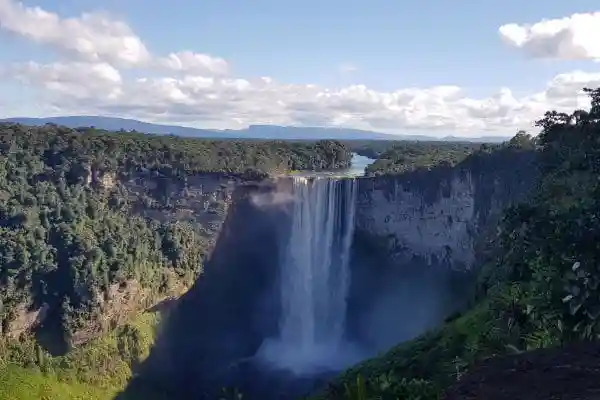
History & Discovery
Being surrounded by nature, wherever it is, has its perks, but when it’s somewhere as breathtaking and biologically diverse as the Amazon rainforest, there’s nothing else like it! The stunning scenery along the trails that lace the plateau around Kaieteur will awaken every sense and make you feel as if you have stepped into paradise. The rainforest surrounding the falls is packed with unique plants and animals, attracting both nature enthusiasts and researchers eager to study life in such an isolated landscape. Many of the creatures that live near Kaieteur can’t be found anywhere else on Earth. One star resident is the pocket‑sized golden rocket frog (Anomaloglossus beebei), made famous in David Attenborough’s landmark series Life on Earth.
Kaieteur Falls was first brought to international attention by an exploration party led by Canadian geologist Charles Barrington Brown during the era when Guyana was still called British Guiana. Commissioned by the colonial government to survey and map the interior, Brown reached the falls on 29 April 1870 and published his findings two years later, in 1872. Word of the waterfall’s stupendous height and power spread quickly—people couldn’t believe it until they saw it for themselves!
The area around Kaieteur is Guyana’s pride and joy, home to animals found nowhere else. Giant mora and greenheart trees soar over an endless rainforest mosaic where adventurous souls can easily lose (and find) themselves—so if you head off the main trail, bring a map and navigation gear! Wander beneath leaves larger than your head, glimpse fantastical insects and birds, and feel as though you’ve stepped into another world—one untouched by time and ruled by Mother Nature herself.
Thanks to Barrington Brown’s reports, Kaieteur has become a must‑see destination. The sheer magnitude of the falls captivates travellers and proves what nature is capable of. Book your ticket, and you can join the thousands who have come face‑to‑face with this awe‑inspiring wonder.
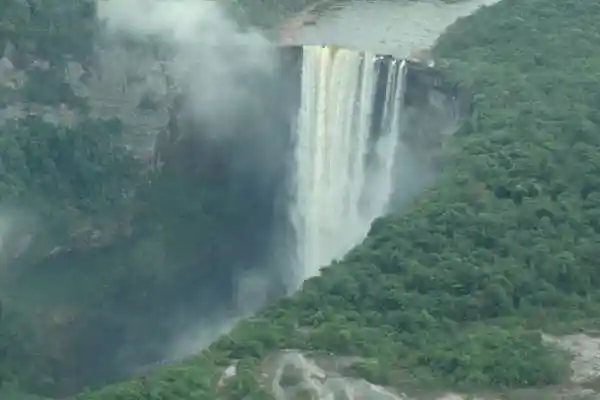
Cultural Significance of Kaieteur Falls
Of course, Kaieteur Falls has always been known to local Indigenous communities. It still holds profound cultural value today, especially for the Patamona people, whose spiritual connection to the waterfall is unbroken. According to oral tradition, the falls were named after Chief Kai, who paddled over the precipice in a self‑sacrificial act to the great spirit Makonaima, thereby saving his people from warring Carib tribes. The suffix “teur” means “falls” in the local Amerindian language, so the English phrase “Kaieteur Falls” is technically redundant.
These stories lend an air of mystery and underscore how deeply significance is woven into every roar of the cascade. Visitors who wish to understand more can join community‑led tours that explore Patamona heritage, traditional ecological knowledge and contemporary stewardship of the park. Such encounters not only enrich the travel experience but also support the guardians of this extraordinary landscape.
Tourism at Kaieteur Falls
This natural beauty spot attracts tourists from around the globe to witness its grandeur and breathtaking ambiance. Day tours can be booked from Cheddi Jagan International Airport, located in Georgetown, to Kaieteur Airstrip in the Potaro-Siparuni region. Visitors on the rours can get close to the waterfall and explore the surrounding forest.
Best Time to Visit Kaieteur Falls
The best time to visit Kaieteur Falls is during the dry season, from September to April. The water flow stays consistent at that time, without diminishing the experience of the powerful waterfall. During this season the skies are clearer, which enhances visibility and your overall adventure.
Having said that, rain can come any day of the year – it is a rainforest, after all! So, if you want the best chance of seeing these falls in favorable conditions, check the forecast and plan before embarking on your trip.
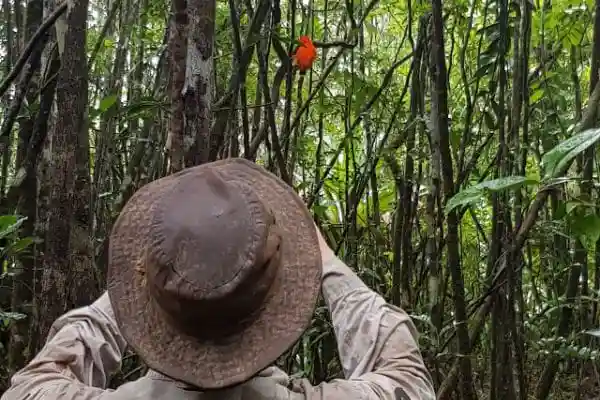
Activities for Visitors
There are plenty of activities for visitors to do once they get to Kaieteur Falls, including:
Guided tours: Traveling with a tour guide can educate you further about Kaieteur Falls’ cultural and natural background. Given the nature of the terrain and the rainforest, guides also ensure you are never in any danger and that you have an enjoyable time.
Walking trails: This place has well-maintained walking trails for anyone to explore the surrounding rainforest. Wildlife can be spotted, and information about local flora and fauna can be found, so make sure to keep your eyes and ears open!
Photography: Everyone wants that pretty picture! From capturing the sheer power of the falls to the vibrant colors of the surrounding trees — there will be plenty of inspiration here.
Conservation of Kaieteur Falls
Kaieteur National Park was created in the hope of sustaining the falls’ surroundings as well as the flora and fauna nearby. There are guidelines and regulations to keep everyone accountable for responsible tourism. Many organizations dedicated to conservation work are active alongside local communities, running educational programs, reforestation initiatives, and the like, all geared towards sustainable development projects.
Preserving this site’s beauty is therefore essential. Visitors should consider how keeping everything in its purest form helps protect what’s left of our precious environment today.
Challenges in Conserving Kaieteur Falls
This place is quite remote, so transportation and accommodation provision for visitors are complex and require careful planning. The government strives to find a balance between conservation and sustainable development. This is why, as more people visit this site, responsible tourism practices are being promoted.
Climate change is another long-term issue that will affect the conservation of Kaieteur Falls. Any rainfall patterns or temperature changes can easily affect the water flow and ecosystem health. Tackling these challenges requires everyone involved — conservation organizations, local communities, government agencies and visitors — to collaborate and develop sustainable solutions.
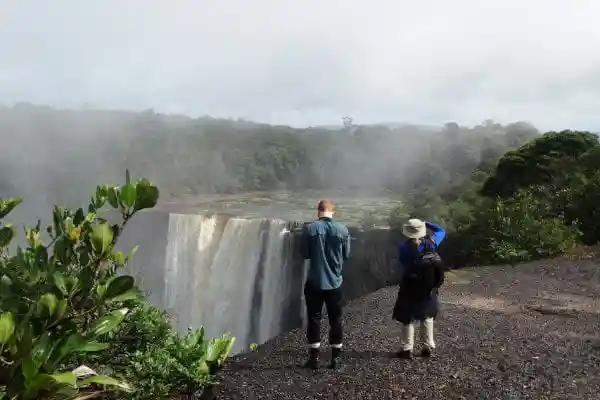
In Conclusion
In a nutshell, Kaieteur Falls’ grandeur and beauty are simply unmatched. This world-famous waterfall has so much going for it: its geographical significance, unique features, cultural importance, rainfoirest nature in the raw… everything! This makes it an absolute must-visit destination for nature enthusiasts and adventure lovers.
Whether you’re into breathtaking scenery, wildlife of all kinds or rich historical folklore (or all three!), make sure you take the time to immerse yourself in the spectacle of Kaieteur Falls. Plan your visit during the dry season to get the best out of your trip and go hiking or wildlife spotting if you’re feeling extra adventurous. Above all, marvel at those towering heights and the immense volume of water cascading down!
Take advantage of this magnificent gem hidden away in Guyana’s wilderness.
Frequently Asked Questions
Why should I visit Kaieteur Falls?
To experience one of Earth’s most dramatic waterfalls amid untouched rainforest, with far fewer crowds than comparable sites.
When is the best time to go?
Visit during the drier spells—February – April or mid‑August – October—for clear views and safe trails.
How do I get there?
A 55‑minute scheduled or charter flight from Georgetown’s Eugene F. Correia (Ogle) Airport lands at Kaieteur Airstrip. From the runway it’s a gentle 15‑minute walk to the first viewpoint.
What facilities are on site?
Basic toilets, a small ranger station and simple snacks—no shops or restaurants. Bring water, light food and sun/rain protection.
How difficult is the walk?
Trails are mostly level and suitable for anyone of moderate fitness; sturdy walking shoes are recommended.
What is the fastest waterfall in the world?
Niagara Falls is often cited as the fastest‑moving waterfall: water sweeps over the Horseshoe lip at more than 65 mph (105 km/h) thanks to its huge volume and steep descent.
What major city is closest to Kaieteur Falls?
Georgetown, the Guyanese capital, lies about 250 km (155 mi) north‑west of the falls and is the usual gateway for flights.
What should I wear to Kaieteur Falls?
Light, breathable clothing; long sleeves and trousers for insects; a light rain‑jacket or poncho; sturdy shoes with good grip; sun‑hat, sunscreen and insect repellent.
How long does the on‑site hike take?
The trail from Kaieteur Airstrip to the main viewpoints is only about 600 m and takes 15–20 minutes at a relaxed pace.
Why is the water at Kaieteur Falls brown?
The Potaro River carries tannins and humic acids from decaying rainforest vegetation, staining the water a tea‑brown colour.
Why is Kaieteur Falls important?
It combines global‑class waterfall geomorphology with high biodiversity and deep cultural significance for the Patamona people—making it both a scientific treasure and a Guyanese national icon.
Is there a cave behind Kaieteur Falls?
No. The drop is a sheer sandstone‑conglomerate cliff with no sizable recess or accessible cave behind the water curtain.
Is Kaieteur Falls a wonder of the world?
It is not on the classical Seven Natural Wonders list or a UNESCO World Heritage Site, but many travellers and Guyanese regard it as one of the world’s great natural wonders.
Can you hike to Kaieteur Falls?
Yes. Overland expeditions involve river‑boat travel up the Potaro, followed by jungle trekking and can take 5–6 days. Most visitors, however, fly in.
What is Guyana known for?
Vast unspoilt rainforest, Kaieteur Falls, El Dorado rum, gold and bauxite mining, cricket legends, and a culturally diverse fusion of Amerindian, Afro‑Guyanese, Indo‑Guyanese and Caribbean heritage.
Is there an underwater waterfall?
Yes—the largest waterfall on Earth is an underwater cataract in the Denmark Strait between Greenland and Iceland, where cold dense water plunges 11 500 ft (3.5 km) beneath warmer Atlantic layers.
Where is Angel Falls?
Angel Falls (Salto Ángel) is in Canaima National Park, Bolívar State, south‑eastern Venezuela.
Which country has the most waterfalls?
There is no definitive count, but Norway is frequently cited as having the highest density of named waterfalls due to its fjords and glacial valleys.
What animals live around Kaieteur Falls?
Golden rocket frogs, Guianan cock‑of‑the‑rock, harpy eagles, white‑collared swifts, jaguars, giant river otters, ocelots, capuchinbirds, morpho butterflies and myriad orchid and bromeliad species.
What region is Kaieteur Falls in?
The falls lie in Potaro‑Siparuni (Region 8), central Guyana.
What waterfall is in the Amazon?
Several lie within the Amazon Basin—Kaieteur Falls in Guyana’s upper Potaro catchment, and Brazil’s Aripuanã and Jirau Falls—but note the main Amazon River itself drops so gently that it has no large waterfalls.
